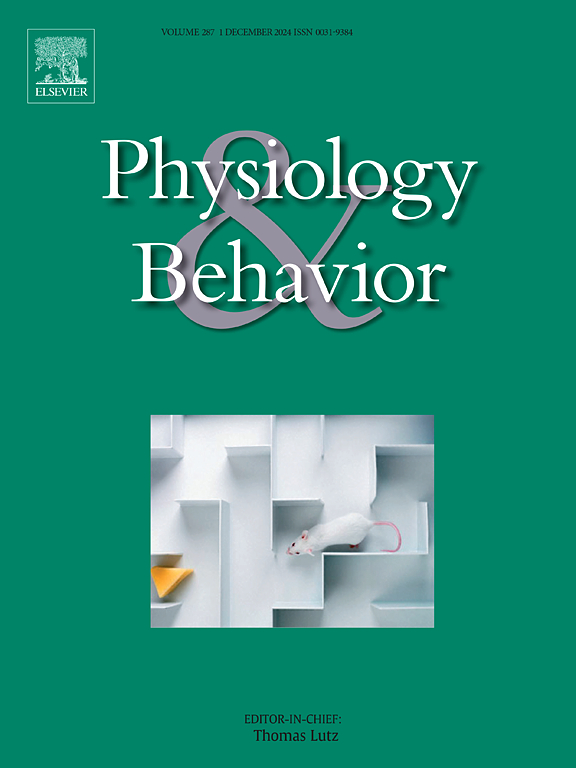脂肪酸结合蛋白5和7差异调节雌性小鼠对急性Δ9-tetrahydrocannabinol的表型反应。
IF 2.5
3区 医学
Q2 BEHAVIORAL SCIENCES
引用次数: 0
摘要
脂肪酸结合蛋白(FABPs)是内源性大麻素系统(ECS)中重要的调节蛋白,也是Δ9-tetrahydrocannabinol (THC)的携带者。本研究的目的是在转基因敲除小鼠体内进一步表征FABPs 5和7如何与四氢大麻酚相互作用。小鼠分别腹腔注射单次15 mg/kg剂量的四氢大麻酚(THC),观察小鼠的运动活性、体温变化和催化反应。我们的研究结果表明,FABP5缺失导致运动活动下降,独立于四氢大麻酚的给药,以及体温和麻痹测试的标准反应。在四氢大麻酚处理组中,FABP7全局缺失导致运动减少,以基因型依赖的方式,以及基因型依赖的体温变化,但对麻痹测试的反应相似。我们的研究结果表明,FABP5和FABP7以不同的方式参与了对THC的生理反应,并进一步了解了THC如何与ECS相互作用。本文章由计算机程序翻译,如有差异,请以英文原文为准。
Fatty acid binding proteins 5 and 7 differentially modulate phenotypic response to acute Δ9-tetrahydrocannabinol in female mice
Fatty acid binding proteins (FABPs) are important regulatory proteins within the endocannabinoid system (ECS) which have also been implicated as carriers of Δ9-tetrahydrocannabinol (THC). The goal of this study was to further characterize how FABPs 5 and 7 interact with THC in vivo using transgenic knockout mice. Mice with or without FABP5 or FABP7 were administered a single 15 mg/kg dose of intraperitoneal injected THC and tested for locomotor activity, change in body temperature, and cataleptic response. Our results indicate that FABP5 deletion resulted in decreased locomotor activity, independent of THC administration, along with standard responses in the body temperature and catalepsy tests. FABP7 global deletion resulted in decreased locomotion in a genotype-dependent manner within the THC-treated groups, as well as genotype-dependent body temperature changes, but similar responses to the catalepsy test. Our findings implicate both FABP5 and FABP7 in the physiological responses to THC, in different manners, and further our understanding of how THC interacts with the ECS.
求助全文
通过发布文献求助,成功后即可免费获取论文全文。
去求助
来源期刊

Physiology & Behavior
医学-行为科学
CiteScore
5.70
自引率
3.40%
发文量
274
审稿时长
47 days
期刊介绍:
Physiology & Behavior is aimed at the causal physiological mechanisms of behavior and its modulation by environmental factors. The journal invites original reports in the broad area of behavioral and cognitive neuroscience, in which at least one variable is physiological and the primary emphasis and theoretical context are behavioral. The range of subjects includes behavioral neuroendocrinology, psychoneuroimmunology, learning and memory, ingestion, social behavior, and studies related to the mechanisms of psychopathology. Contemporary reviews and theoretical articles are welcomed and the Editors invite such proposals from interested authors.
 求助内容:
求助内容: 应助结果提醒方式:
应助结果提醒方式:


